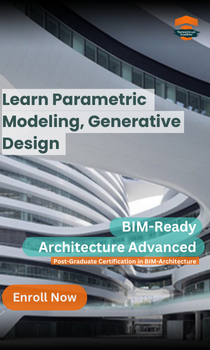Exploring the Evolution of Technology in Architecture
Sep 04, 2024
Category: BIM / Digitization / Automation
Admin

Architecture has made its presence felt in human lives since the beginning of this world. It has constantly evolved from ancient to medieval and modern eras. Various cultures as well as societies across the world have adopted it. In contemporary times, technology in architecture has transformed this sector.
Architectural technology has provided breakthroughs to architects in using their imagination beyond the present times and creating futuristic designs. In this blog, let’s discover how technological advancements have impacted the field of architecture.
Building Information Modeling (BIM)
BIM is an integral part of the construction projects in the modern times. Architects are leveraging this technology in architecture to create captivating designs. It facilitates real-time, dynamic and interactive processes that include the physical and functional characteristics of the structure.
Moreover, BIM opens the door for better collaboration between all the project stakeholders, like architects, contractors, engineers and clients. Hence, improvements in the building design, construction and management ensue.
Project stakeholders can make informed decisions regarding the planning, demolition and construction of a building with BIM usage. It ensures sustainability and cost-effectiveness.
Artificial Intelligence (AI)
Artificial intelligence (AI) does the repetitive tasks and has empowered architects to dedicate more time to the creative process. Architects use AI algorithms to analyze a massive amount of data and generate designs that suit specific criteria.
Furthermore, this technology in architecture stays at the forefront in energy efficiency, building performance and structural integrity optimization.
Smart Buildings and Sensor-Based Systems
Responsive environments and smart buildings are the welcome change in the architecture sector. Today, buildings are equipped with climate control systems, automated lighting, sensor-equipped facades and interactive building interfaces.
It has resulted in enhanced comfort, safety and convenience for the occupants. Building performance and energy efficiency have been made possible with such technology in architecture.
3D Printing
3D printing is another revolutionary architectural technology that has impacted the architecture industry. It enables architects to see their designs in accurate physical form to better understand the spatial dimensions and relationships.
Architects are leveraging 3D printing to construct entire components of the buildings and also entire structures in some cases. It can significantly reduce waste, costs and construction time.
Virtual Reality (VR)
Virtual reality fever has gripped gamers and social media users. It offers the users to interact with a 3D space virtually. Architects are also using it to show the 3D renderings of their designs. This technology in architecture allows project stakeholders to have a walkthrough of the designed space through a virtual tour.
VR provides a closer look at the entire building to the project stakeholders through a headset. Hence, better clarity of the design in the planning stage for project members saves time as well as costs.
Generative Designs
The use of technology in architecture is gaining popularity in design generation. Architects are using one set of ideas or requirements like materials, budget and building techniques to create different designs.
The use of generative designs can boost the accuracy of new designs as they learn from previous ones.
Animation and Rendering
The introduction of animations and 3D renderings is a massive shift from still photos of designs in the AEC industry. This technology in architecture lets the architects create and design spaces that look as good as finished projects.
3D digital renderings offer a clear look of the project at scale size, lighting, coloring and textures. Furthermore, animation allows the architects to provide a virtual tour of various spaces of the projects to the clients.
Digital Sketches
The evolution of architecture from hand-made designs to digital ones does not mean that drawings are outdated. Today, AEC experts are using digital sketchbooks to create, save and organize designs. This technology in architecture is easy to use and one can send the drawings to clients and colleagues.
Conclusion
Architectural technology is a power that fosters innovation, accuracy, faster processes, and better decision-making in construction projects. Mastering these technologies is essential to stay relevant in the AEC industry. It can offer you various perks such as salary increases, higher designation, and more. Embrace it in the architecture sector and climb new heights of success.
FAQs
Q1. How is the technology revolutionizing architecture world?
Ans. The use of technology in this field helps improve efficiency, cost reduction, and increased accuracy. Also, teams find it easy to communicate and collaborate through the incorporation of technology.
Q2. What are the technological advancements in architecture?
Ans. BIM, animations, 3D printing, virtual reality, responsive environment and generative designs are the major technologies that are pushing the AEC sector to reach new heights of success in building awesome structures.
Q3. How will technology change architecture in the future?
Ans: Emerging technologies such as drones and artificial intelligence (AI) have already made their way into this sector. Along with them, we can witness the use of robotics in design and construction in the years to come.








